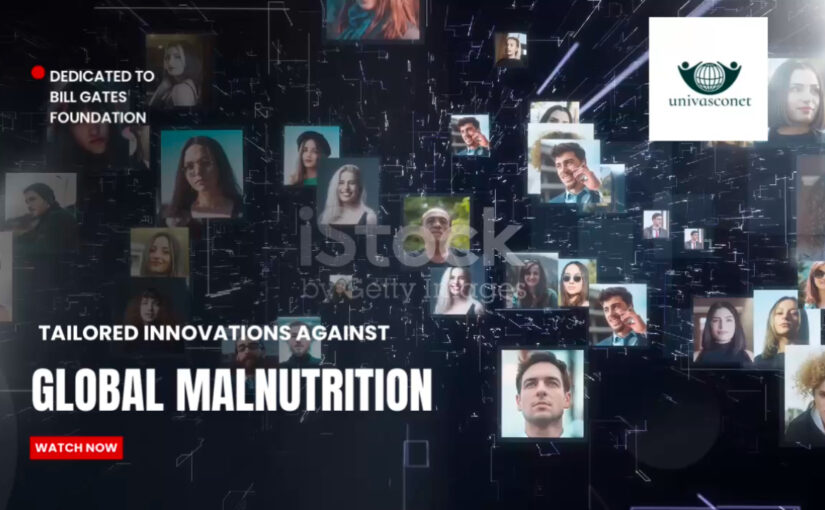Eradicating malnutrition globally requires innovative, scalable, and sustainable solutions that address its root causes—poverty, food insecurity, and lack of access to nutritious food. Below are key innovations that could contribute significantly:
1. Biofortification of Crops
• What: Developing nutrient-rich crops through traditional breeding or genetic modification.
• Examples: Golden rice enriched with Vitamin A, iron-rich beans, or zinc-fortified wheat.
• Impact: Enhances the nutrient content of staple crops consumed by millions.
2. Precision Agriculture
• What: Leveraging AI, IoT, and drones to optimize farming practices and reduce waste.
• Examples: Real-time soil and crop monitoring for nutrient optimization.
• Impact: Boosts crop yields and nutritional value, especially in resource-scarce regions.
3. Lab-Grown and Alternative Proteins
• What: Producing affordable, sustainable protein sources through lab-grown meat or plant-based alternatives.
• Examples: Companies like Beyond Meat, Impossible Foods, and cultured meat startups.
• Impact: Reduces dependence on animal agriculture, making protein more accessible and eco-friendly.
4. Food Fortification
• What: Adding essential vitamins and minerals to widely consumed foods.
• Examples: Fortified salt (iodine), milk (Vitamin D), or flour (iron and folic acid).
• Impact: Targets widespread micronutrient deficiencies in a cost-effective manner.
5. Mobile Health and Nutrition Platforms
• What: Using mobile apps or SMS to educate and monitor nutrition.
• Examples: AI-driven apps to track caloric intake, offer personalized diet plans, or connect users to local resources.
• Impact: Provides real-time, personalized guidance, especially in rural areas with limited healthcare.
6. Vertical and Urban Farming
• What: Growing crops in controlled environments in urban areas using minimal land and water.
• Examples: Hydroponic and aeroponic systems.
• Impact: Brings fresh, nutritious produce to urban populations while reducing dependency on traditional supply chains.
7. Waste Reduction Innovations
• What: Technologies and policies to reduce food waste along the supply chain.
• Examples: Edible coatings that extend shelf life, apps connecting excess food to needy populations.
• Impact: Ensures more food reaches the malnourished.
8. Micronutrient Supplements
• What: Affordable supplements for vulnerable populations.
• Examples: Ready-to-use therapeutic foods (RUTFs) for severe acute malnutrition.
• Impact: Saves lives in emergency settings and addresses chronic deficiencies.
9. Blockchain for Food Distribution
• What: Using blockchain to track and ensure equitable food distribution.
• Examples: Transparency in food supply chains to prevent corruption and ensure aid reaches the needy.
• Impact: Improves trust and efficiency in food assistance programs.
10. Social Entrepreneurship and Empowerment
• What: Empowering local communities to address malnutrition through small-scale businesses.
• Examples: Programs teaching women to grow and sell nutrient-dense foods locally.
• Impact: Builds long-term resilience and addresses malnutrition at the grassroots.
11. Personalized Nutrition
• What: Tailoring dietary interventions to individual needs based on genetics and health data.
• Examples: Nutrigenomics research to prevent malnutrition-related diseases.
• Impact: Improves efficacy of interventions by targeting specific deficiencies.
12. Policy and Education Innovations
• What: Developing education programs and policies to improve awareness and accessibility.
• Examples: School feeding programs, nutritional literacy campaigns.
• Impact: Prevents malnutrition through informed decision-making.
Implementation and Collaboration
• Multisectoral Approach: Collaboration between governments, NGOs, tech firms, and communities.
• Funding and Research: Increased investment in research and global partnerships to innovate further.
• Local Solutions: Adapting innovations to the cultural, social, and economic contexts of each region.
With these innovations, coupled with strong political will and community engagement, malnutrition can be significantly reduced, if not eradicated.

Leave a Reply